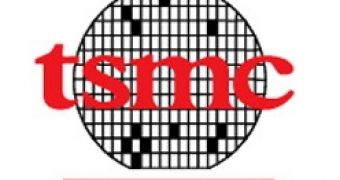Taiwan Semiconductor Manufacturing Co Ltd. (TSMC), the world's largest contract chip maker, announced on Tuesday that it is ready to start using advanced 28-nanometer technology at the beginning of 2010 for the production of CPUs, graphics processors and gadget chips. TSMC is mainly competing against United Microelectronics Corp (UMC) in the development of new fabrication technology for chip production.
According to the company, the 28nm process will be delivered as a full node technology and customers will be able to choose either high-k metal gate (HKMG) or silicon oxynitride (SiON) material to support their applications and performance requirements. TSMC’s manufacturing-flexible 28nm family will be the only one in the industry to offer both a HKMG and a SiON transistor option, which means that the technology will be a full node.
“Product differentiation, faster time-to-market and investment optimization are the three most important values TSMC delivers to our customers. In support of these values, we are developing this comprehensive 28nm technology family so that it offers choices, depending on the customer applications and performance requirements,” said Jason Chen, vice president, Worldwide Sales and Marketing, TSMC.
The lowest power and most cost-effective technology of the family is the SiON-based 28LPT (low power / high performance) process. It should provide up to 50 percent more speed, 30 to 50 percent lower power consumption and two times the gate density of the TSMCs 40LP technology. The 28LPT process is said to support a wide range of applications, including cellular baseband, application processors, wireless connectivity, and portable consumer; it is expected to enter production in early 2010.
According to the company, it decided to start building on the proven SiON technology for the 28LPT process as a result of the continuous changes that appear into wireless and portable consumer application dynamics, driven by an intense pressure for products to hit market windows. While a few years ago consumers would look up for low-leakage handsets that supported long battery life, today they are more interested in wireless devices for Internet browsing, video streaming, music, mobile TV, GPS navigation, and traditional phone and texting services as well. The battery life is highly affected by the active usage power consumption.
“SiON gate technology, because of its smaller gate capacitance and therefore lower active power than HKMG, provides a solution with lower total power, cost, and risk for power-limited applications,” TSMC said. Dr. Mark Liu, senior vice president, Advanced Technology Business, TSMC. He added that “Our customers are really looking for a high performance, low active power, and cost-effective technology to meet their market requirements for their portable consumer products”.
The high performance HKMG 28HP process technology, the first TSMC of the kind, will be able to provide support for demanding applications including CPU, graphics processors, and FPGAs, while offering more than 30 percent higher speed than TSMCs 40G process at similar power density as well as twice the gate density than 40G, the company revealed.
The HKMG technology promises a lot in terms of device scaling at smaller geometries than 28nm. The 28HP technology should enter production in 2010 as well. Currently, there are alpha version design lits that support TSMCs 28nm technologies. By the end of 2008, a prototyping service, 28nm CyberShuttle, should begin, and it is expected to deliver competitive cycle time and frequency. TSMC is known to have been driving process technology to advanced 90-, 65- and 45-nanometer for customers like Texas Instruments and Nvidia, and recent news say it may apply its 40nm process to chips manufactured for AMD.

 14 DAY TRIAL //
14 DAY TRIAL //